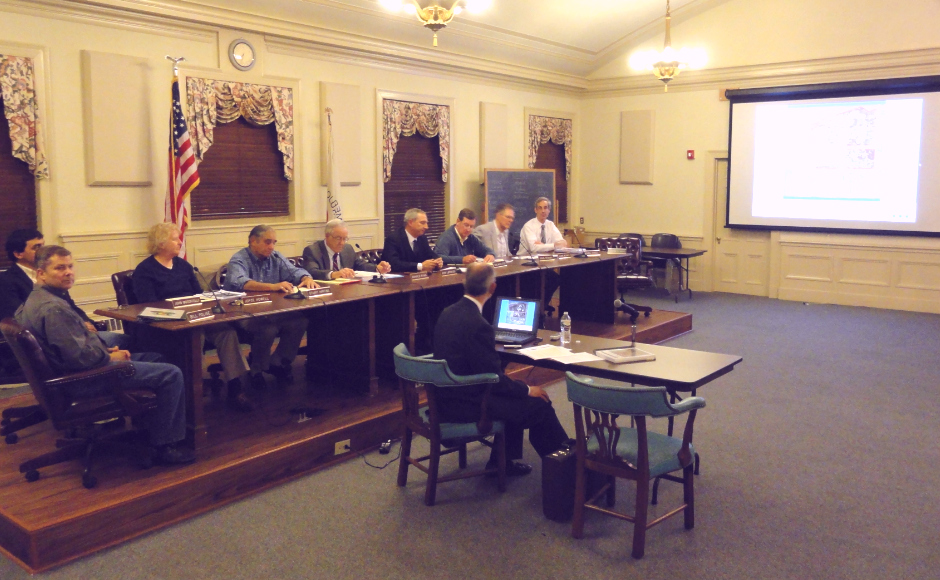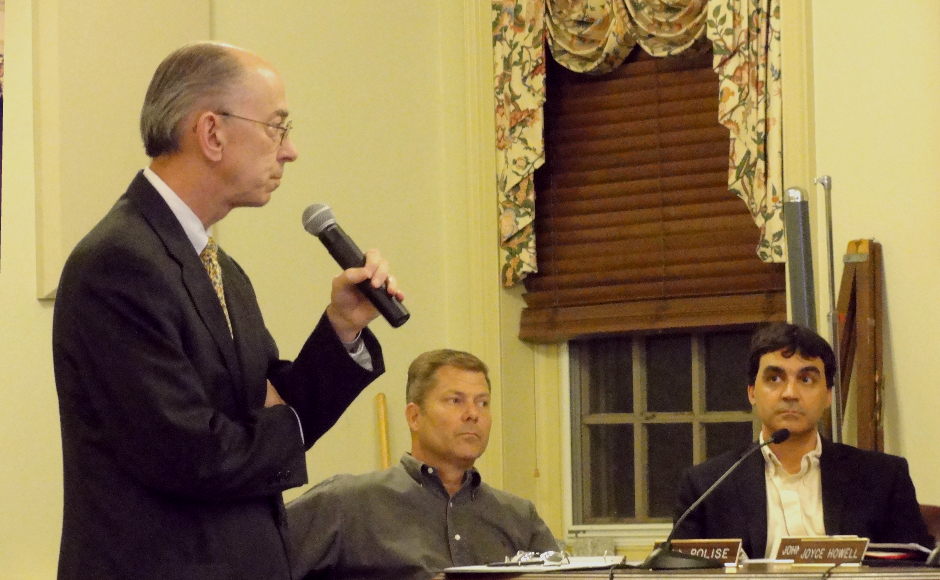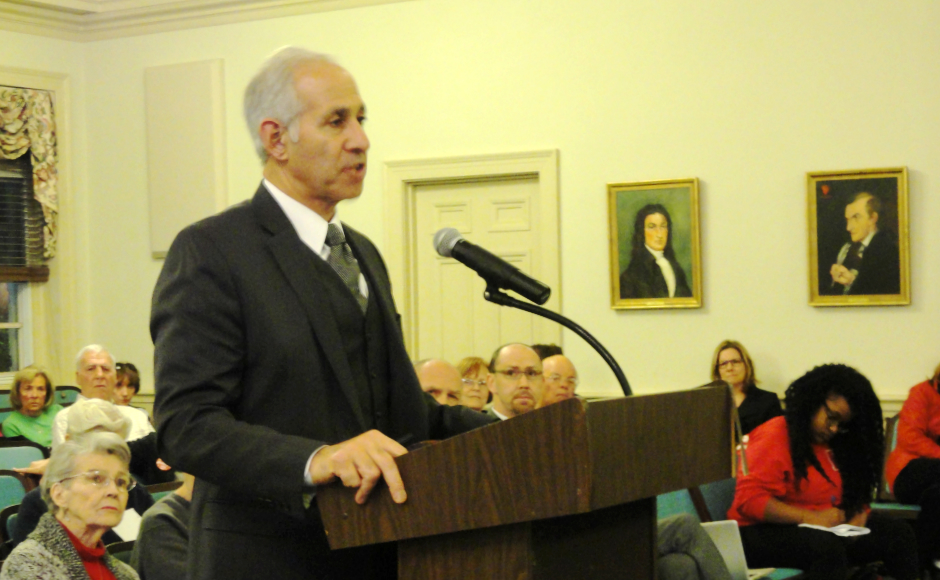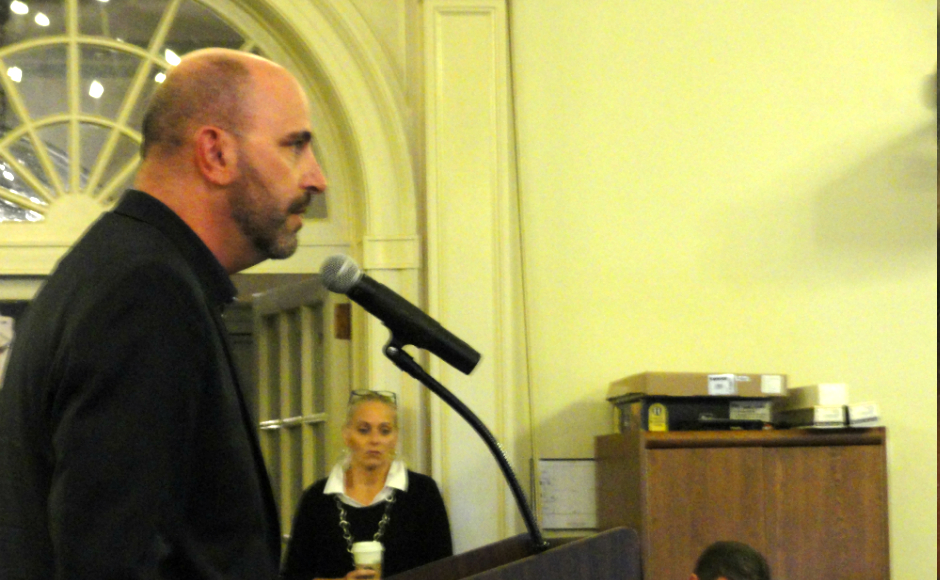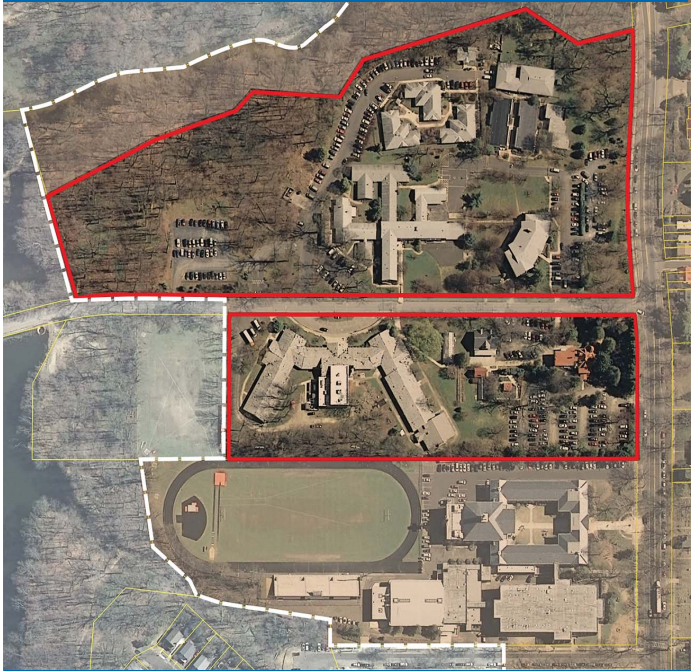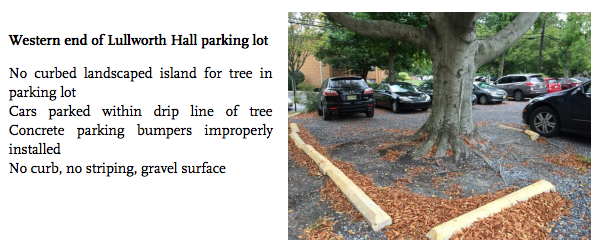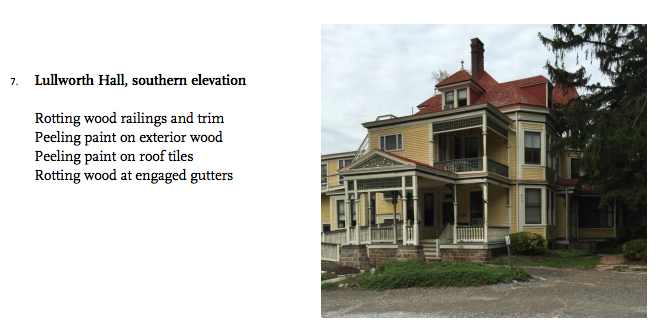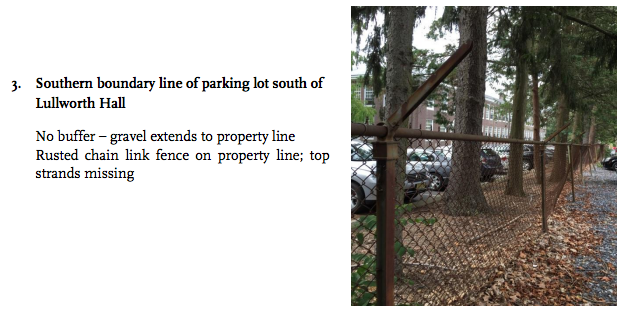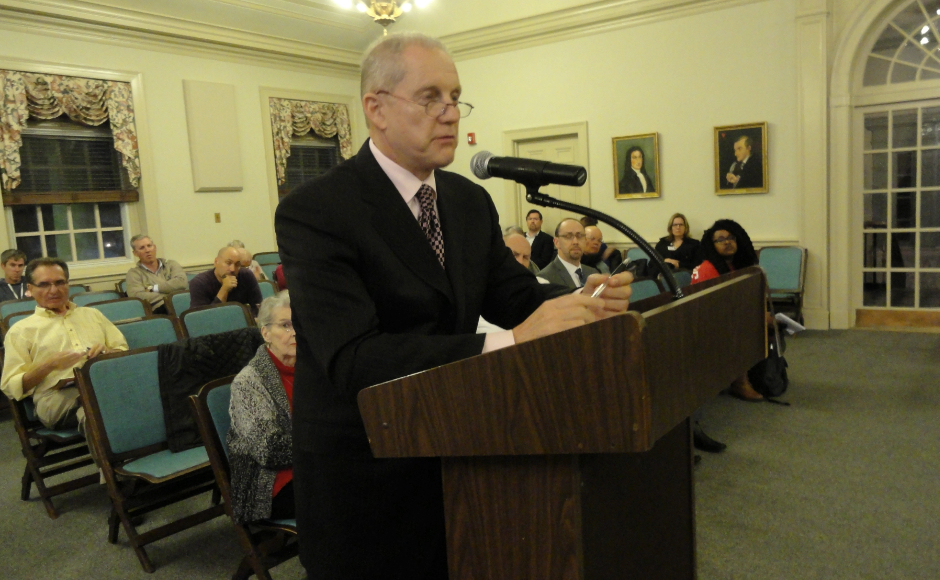The board will likely reconvene in December to take up the issue once more in a special meeting. Meanwhile, talks between the borough and developer J. Brian O’Neill continue.
By Matt Skoufalos
On Thursday, a third independent consultant in 13 years concluded that the 19 acres of Haddonfield real estate comprising the Bancroft parcel indeed should be zoned for redevelopment.
But, as has been the case with most decisions involving the historic property, any definitive action to that effect will be put off.
Out of deference for the interests of developer J. Brian O’Neill, the contract purchaser of the land—and especially as a safeguard against any legal appeal from him—the board voted unanimously to continue discussion of the redevelopment plan for at least another month.
After planner Philip Caton of the Trenton firm Clarke Caton Hintz presented an extensive case for redeveloping the parcel, attorney Jack Plackter of the Atlantic City-based Fox Rothschild, LLP asked the board for a continuance on behalf of O’Neill’s holding company, II Hopkins Lane, LLC.
Plackter cited the “voluminous” material in Caton’s report as well as a need to “digest” his testimony; additionally, Plackter said his clients would like the opportunity for their engineer, who was unavailable Thursday, to cross-examine Caton.
O’Neill has been in talks with Haddonfield commissioners to negotiate a deal for the parcel, and Plackter said those talks are still ongoing. His clients hope a deal can be struck so that “the developer can get what he wants and the community can get what they want, Plackter said.
“That’s the easiest way to resolve a difference of opinion,” he said.
When asked whether both of those outcomes were compatible with one another, Plackter said, “It can be.”
Haddonfield Mayor Jeffrey Kasko was equally optimistic that a mutually beneficial deal can be brokered among both sides.
“We have to work out the finance package, and we have to work out what we’re going to allow to be developed on there,” he said.
Kasko said Caton’s presentation “puts us in a stronger position” by refreshing the findings of the two prior studies, the latest of which was conducted in 2006.
“We just want to be doubly sure that we’re doing the right thing,” the mayor said.
‘Everything’s a factor’
After the meeting, Haddonfield Commissioner John Moscatelli said that the decision by the board to postpone formal action was “not unexpected” given the ongoing nature of discussions with O’Neill.
“Everything affects the talks,” Moscatelli said. “It’s a negotiation. Everything’s a factor.”
Acknowledging “a lot of possible permutations” of those negotiations, some of which “would require a redevelopment,” Moscatelli said it’s not inconceivable a deal could be struck that would lead to O’Neill eventually advocating for the borough to zone the property for redevelopment.
The commissioner also called Caton’s report “a necessary thing that will possibly be useful” to the borough “regardless of where we end up.”
“If there happened to be an outcome where RCA abandoned this altogether, we would still have to contend with the next buyer,” Moscatelli said. “Had previous commissioners moved forward with this at a number of points in time, we would not be in the situations we’re in today.”
In the context of the surrounding residentially zoned neighborhood, the Bancroft parcel is currently a pre-existing, non-conforming use, Caton testified. Even if it is eventually zoned for residential redevelopment, the last plan on record for the property includes 10 units of affordable housing, a count Moscatelli said the borough is seeking to have recertified in court.
Bancroft also includes a trio of historic buildings: Lullworth Hall, the Carriage House, and the (Bancroft-dubbed) Craft House, which Caton said serves as a mailroom and packing center. Moscatelli said that if the borough purchases the property, “there’s a very high likelihood we would subdivide it and sell [Lullworth] to someone who wanted to use it as an office [or] a bed-and-breakfast.
“I don’t see the borough wanting to keep it and use it for municipal space,” he said. “The rest of that facility is not historic.”
The Bancroft acreage also is contiguous to the Camden County park system. Moscatelli said that any use of open space funds to purchase the land, which he said Camden County had considered as recently as 2013, would also necessarily protect a certain portion of it from development of any kind.
While deferring any thoughts on potential redevelopment plans for Bancroft, Caton said after the meeting that any such considerations would necessarily factor in “the historic nature of Lullworth Hall, Carriage House, Craft House, and the wonderful river corridor; how the development on that parcel relates to that ecological border.”
Traditional planning values in those circumstances would center on preservation of the historic structures and sustainable development “that respects the county park system and tries to give the public access to it to maximize the benefit of Cooper River Park to whatever the future holds,” he said.
The case for redevelopment
“Bancroft has, as we all know, a long history in Haddonfield,” Caton’s testimony began.
He went on to describe how studies dating back to a 2002 document prepared by planner Elizabeth McKenzie and another in 2005 by the firm Heyer, Gruel & Associates, backed up his assessment of Bancroft as “an institution designed without any long-range plan” that grew “to meet the needs of a changing clientele without any regard for adverse downstream consequences.”
Under New Jersey redevelopment and housing law, any of eight criteria must be fulfilled to designate a parcel of land for condemnation and redevelopment. Caton testified that Bancroft qualifies under criterion D, which specifies:
Areas with buildings or improvements which, by reason of dilapidation, obsolescence, overcrowding, faulty arrangement or design, lack of ventilation, light and sanitary facilities, excessive land coverage, deleterious land use or obsolete layout, or any combination of these or other factors, are detrimental to the safety, health, morals, or welfare of the community.
“Under normal circumstances, municipalities can be motivated to declare study areas in need of redevelopment so that they improve the options they have to deal with developers on that property,” Caton said. “There are both financing options, taxing options, and additional land-use controls that can be put into place in redevelopment areas that are not available in normal zoning districts.
“This determination does not obligate the borough to condemn property,” he said; rather, “It creates the opportunity for it if the commissioners so choose.”
Five specific conditions at the site are persistent problems that qualify Bancroft for redevelopment, Caton said: parking, traffic circulation, stormwater management, impervious surface coverage, and the conditions of its buildings and grounds.
For much of his case, Caton compared conditions at the present Bancroft site with plans submitted for its new campus in Mount Laurel.
In the move, Bancroft expects to increase its staff by 10 percent, and its parking by 86 percent. The organization will have 615 parking spaces at the new campus rom—284 more than the 331 parking spaces currently at the site in Haddonfield, which Caton said has “been struggling for years to operate with extremely inadequate parking.” Much of the parking on the Haddonfield campus also is housed in gravel lots, which Caton said are poorly maintained and impede accessibility.
Bancroft is also responsible for intensified vehicle traffic along Hopkins Lane approaching Kings Highway during morning, midday, and afternoon peak hours, resulting in “unstable flow with inevitable roadway congestion,” Caton said. The lack of space to create a dedicated left-hand turning lane from Hopkins Lane onto Kings Highway is another contributing factor, he said.
The Bancroft campus also is capable of detaining just 7,500 square-feet of water, “assuming the pipes are in good condition,” Caton said. This amounts to 13 percent of the 58,000 square-feet of water required for a property of its size under current state statutes.
The effect of this stormwater management deficit is compounded by the fact that 50 percent of the property is covered by impervious surfaces; this is 10 times the amount with which its new campus is designed, he said.
Finally, the planner pointed out how time has affected historic Lullworth Hall, which he said “demonstrates faulty design, a lack of maintenance, [and]deferred maintenance.” Caton cited several examples of this, from its uneven walkways to its lack of pedestrian lighting to rotting wood and peeling paint on the building itself.
Other nearby buildings on the campus suffer from “poor sanitary design, poor waterproofing design, and a lack of ventilation,” he said. They may also be missing fire-rated walls, lacking accessibility, or possessed of any number of other flaws, from exposed and unsafe wiring to suspected hazardous materials.
Caton also said that the value of the land (some $9.65 million) accounts for almost 80 percent of the $12.23-million assessed value of the entire property, another sign of its greater utility as a redevelopment parcel and not in its existing condition.
During the public comment portion, attorney Jeffrey Baron of the Voorhees firm Baron and Brennan asked the planning board to “implement the entirety of Caton’s plan” and to base its actions “in part or in whole of his redevelopment study.”
On retainer for the Haddonfield Citizens Group, which was incorporated to oppose the situation of RCA at the Bancroft site, Baron pointed out the unlikelihood of any community commissioning three separate redevelopment studies for the same parcel of land, and mused further on the chances that such circumstances would yield three confirming opinions.
“You’ve had three studies done, and it’s been done by three different professional planners, and they’ve all come to the same conclusion: that the Bancroft track is in need of redevelopment,” Baron said. “That conclusion was reached in 2003, reconfirmed in 2005, and once again reconfirmed by Mr. Caton in 2015. That’s a very telling history.”
Get more local news that matters. Check out NJ Pen on Facebook and Twitter, [tinypass_offer text=”or click here to become a supporter.”]

